Transform Your Space: How to Create a Zen Garden at Home?

In today’s busy world, it’s so important to have a peaceful retreat for our mental well-being, right? What if that retreat could be in your backyard or even a small corner of your home?
A Zen garden can bring tranquility, mindfulness, and balance to your life—without taking up much space. It doesn’t matter if it’s a large yard or a compact patio, creating a Zen garden is simpler than you think.
Let’s explore how you can craft your own peaceful sanctuary at home.
Table of Contents
What is a Zen Garden?
First, let’s dig into what a Zen garden actually is.
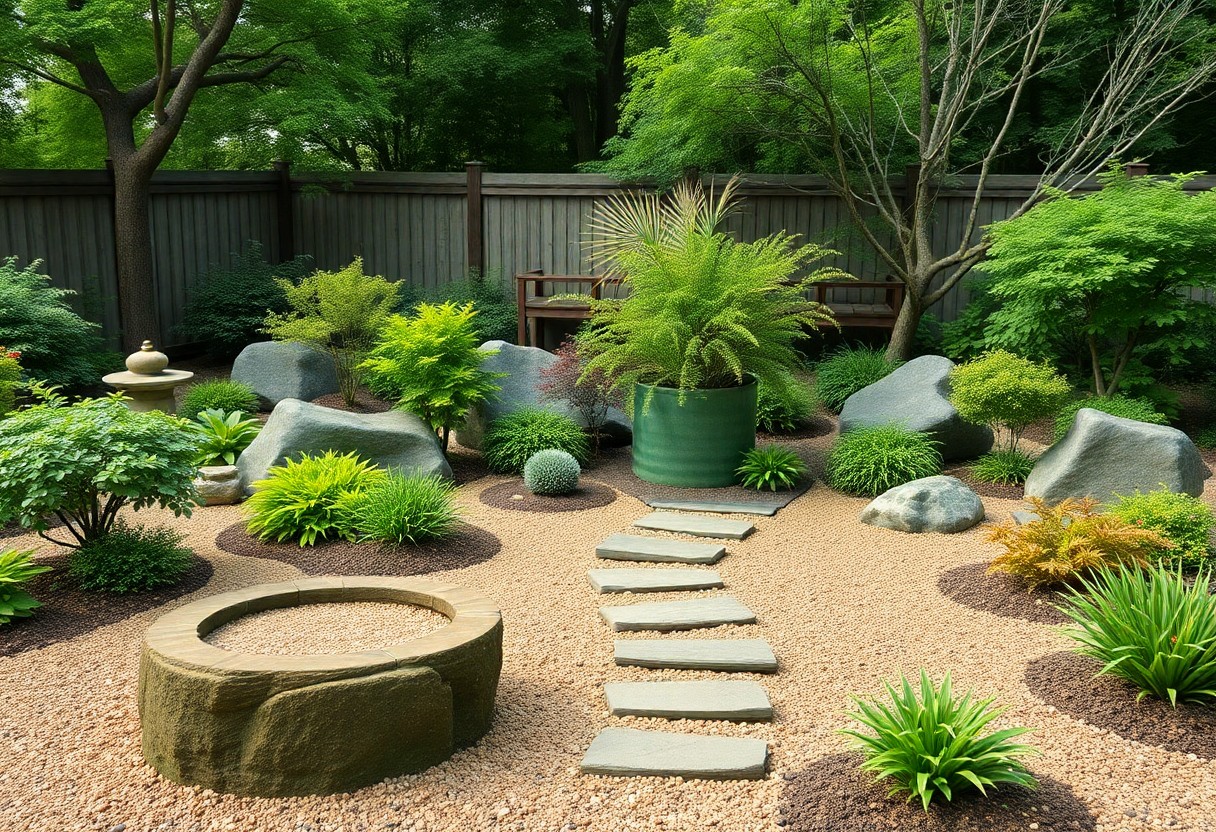
A Zen garden, also known as a Japanese rock garden, is more than just a beautiful outdoor space. It’s a place where simplicity and minimalism combine to foster relaxation and mindfulness.
These gardens have been used for centuries in Japanese culture to promote meditation and peaceful reflection. A typical Zen garden incorporates natural elements like rocks, sand, and plants, arranged in a way that invites calm and contemplation.
The key to a Zen garden lies in its simplicity, balance, and the seamless blending of natural elements.
Why Create a Zen Garden at Home?
Creating a Zen garden at home offers more than aesthetic value; it’s about creating an environment that helps you slow down, breathe, and find peace. In today’s world, where we’re constantly surrounded by noise and distraction, a Zen garden provides a much-needed break.
It can help reduce stress, encourage mindfulness, and offer a sense of calm in the midst of daily chaos. Plus, it’s a fantastic way to make any space—large or small—more inviting.
How to Plan Your Zen Garden
So, are you ready to develop zen garden at home? If so, then it’s time to get your hands dirty! Here’s a step-by-step guide for you!
Finding the Perfect Spot
Before diving into design, choose a location that will support the tranquility of your garden. Whether it’s a sunny spot in your backyard or a small balcony, pick a place that feels naturally quiet and calm.
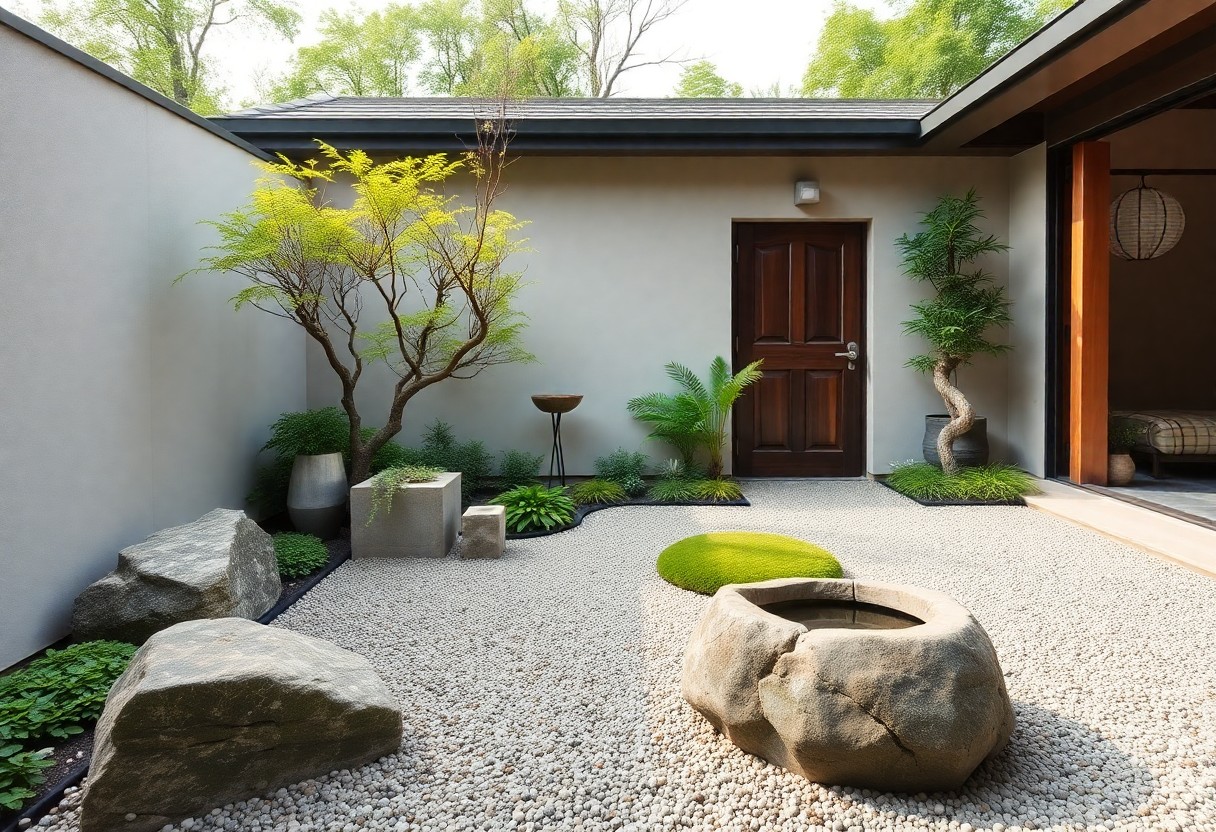
Consider factors like sunlight, shade, and how easily you can access the space. After all, you’ll want to spend time here, so convenience is key.
Define Your Intentions
What do you want to get out of your Zen garden? Is it a space for meditation, or do you simply want a calming visual escape?
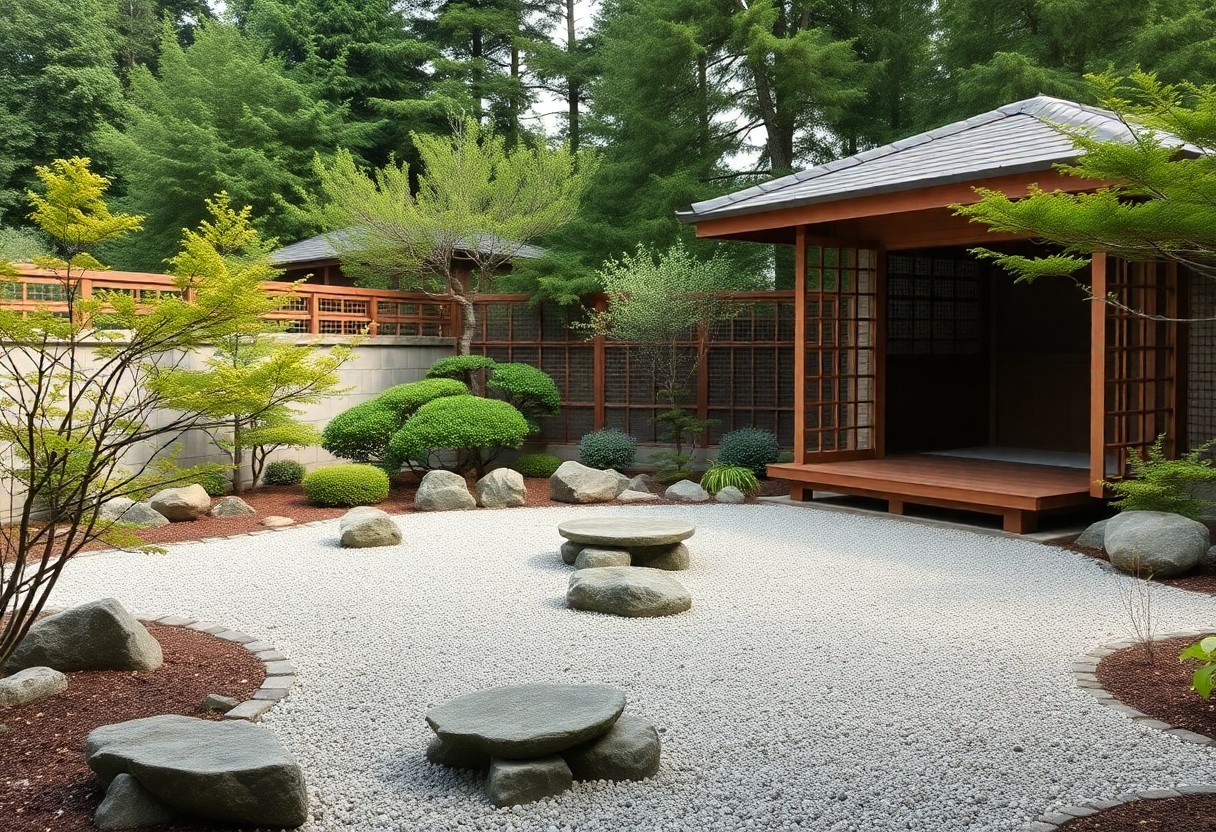
Setting your intentions will guide your design choices. A meditation space might call for quiet, private corners, while a visually calming space might focus more on the overall aesthetics and flow.
Essential Elements of a Zen Garden
Now that you’ve picked the right spot and defined your goals, it’s time to focus on the key components that make a Zen garden truly special. These elements work together to create a peaceful, balanced environment.
1. Gravel and Sand
The base of any Zen garden is usually gravel or sand. These materials represent water and are often raked into patterns resembling ripples. This symbolic use of gravel brings a soothing, fluid motion to the garden, even though the material itself is static.
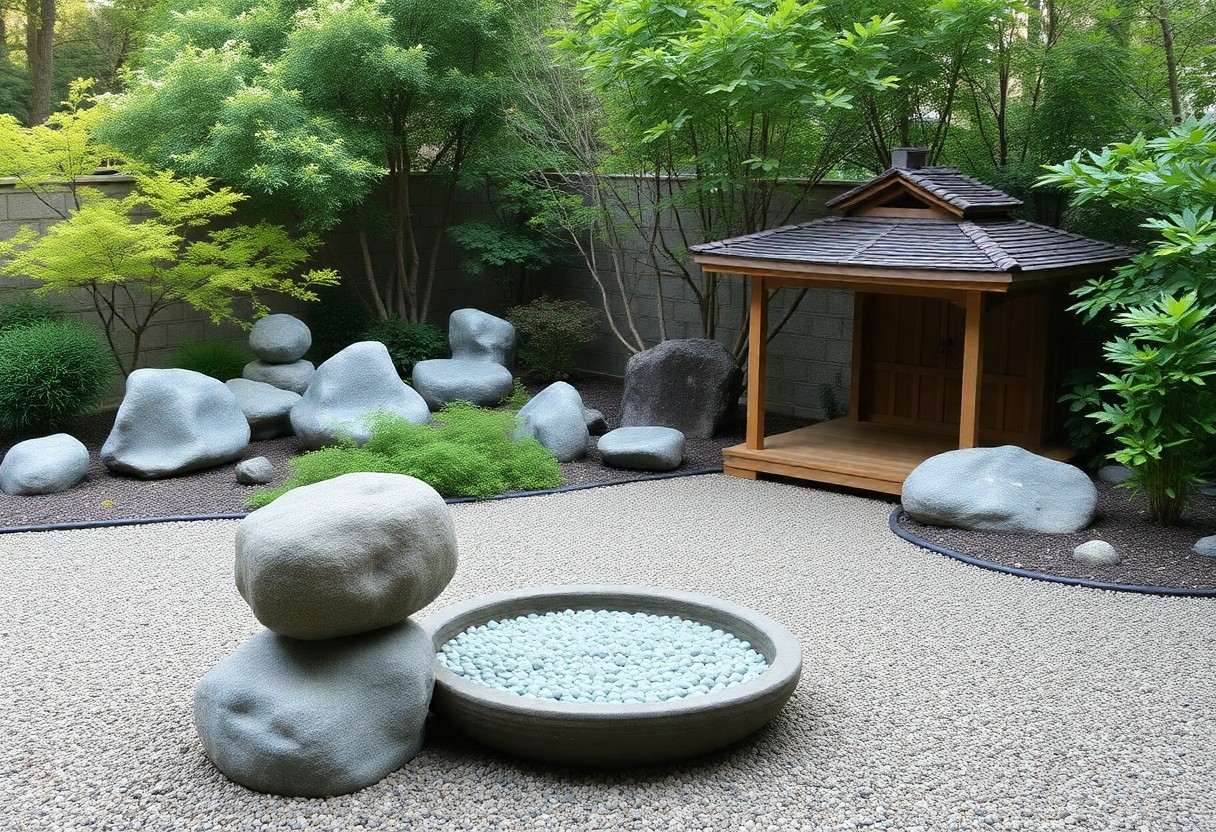
Raking the gravel or sand can also become a meditative practice, allowing you to focus and clear your mind. Choose neutral-colored sand or fine gravel for the best effect.
2. Rocks and Stones
Rocks and stones add structure and contrast to the softer elements of a Zen garden. They symbolize mountains and islands, providing grounding focal points.
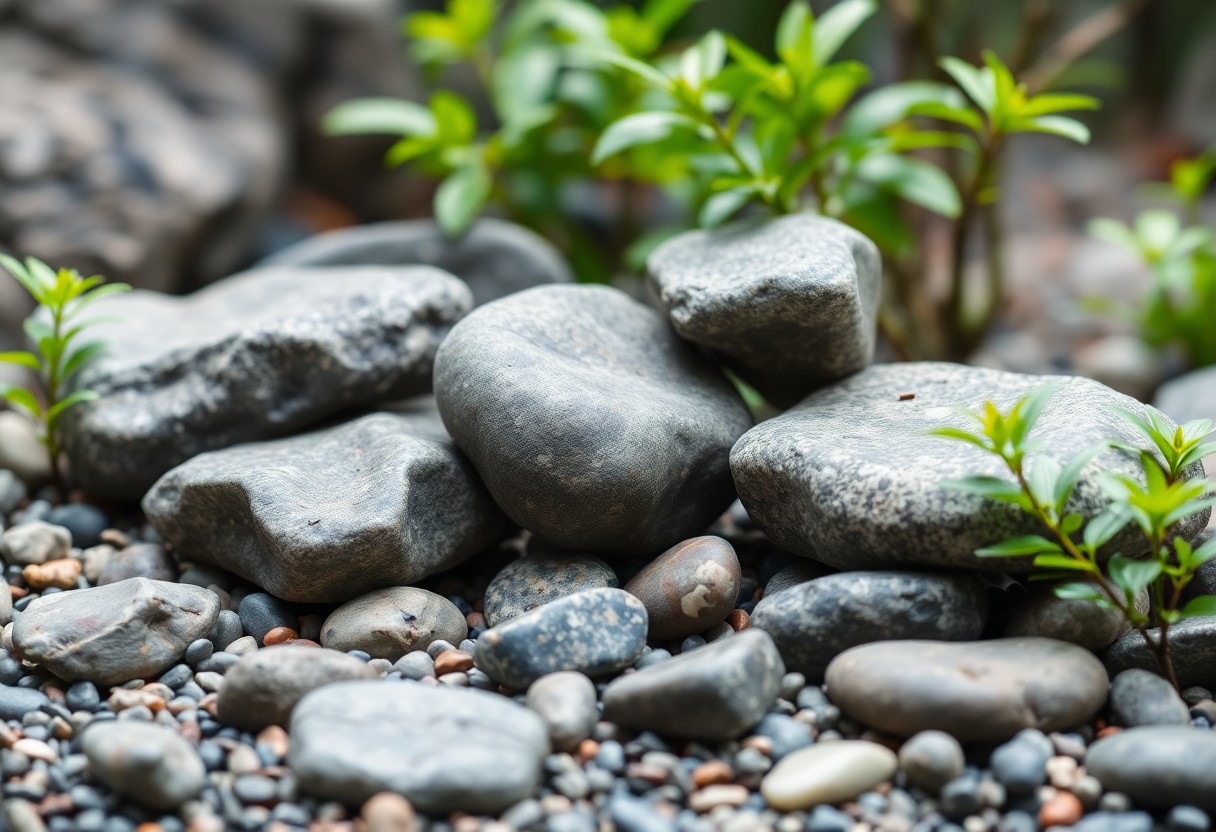
Select rocks of different sizes and shapes, and arrange them in a way that feels balanced and organic. Avoid making it look too perfect. Part of the charm of a Zen garden is that it mimics the natural world, which is often asymmetrical.
3. Plants and Greenery
Zen gardens traditionally use fewer plants than other garden types. Moss, ferns, and low-growing shrubs are great options.
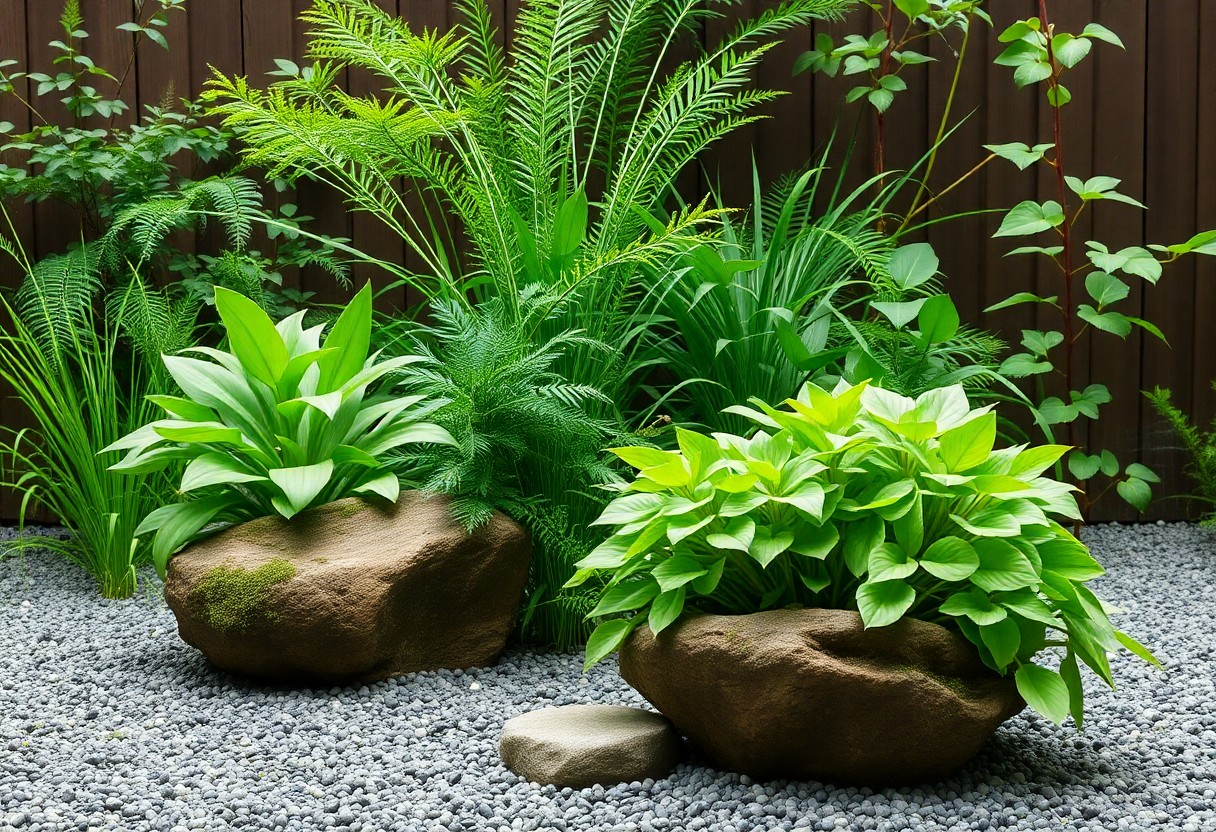
For a vertical element, consider adding bamboo, which symbolizes strength and flexibility. Remember to keep your plant selection simple and avoid overcrowding the space.
4. Water Features
A small water feature can add an extra layer of calm to your Zen garden. The gentle sound of flowing water creates a soothing ambiance, making it easier to relax.
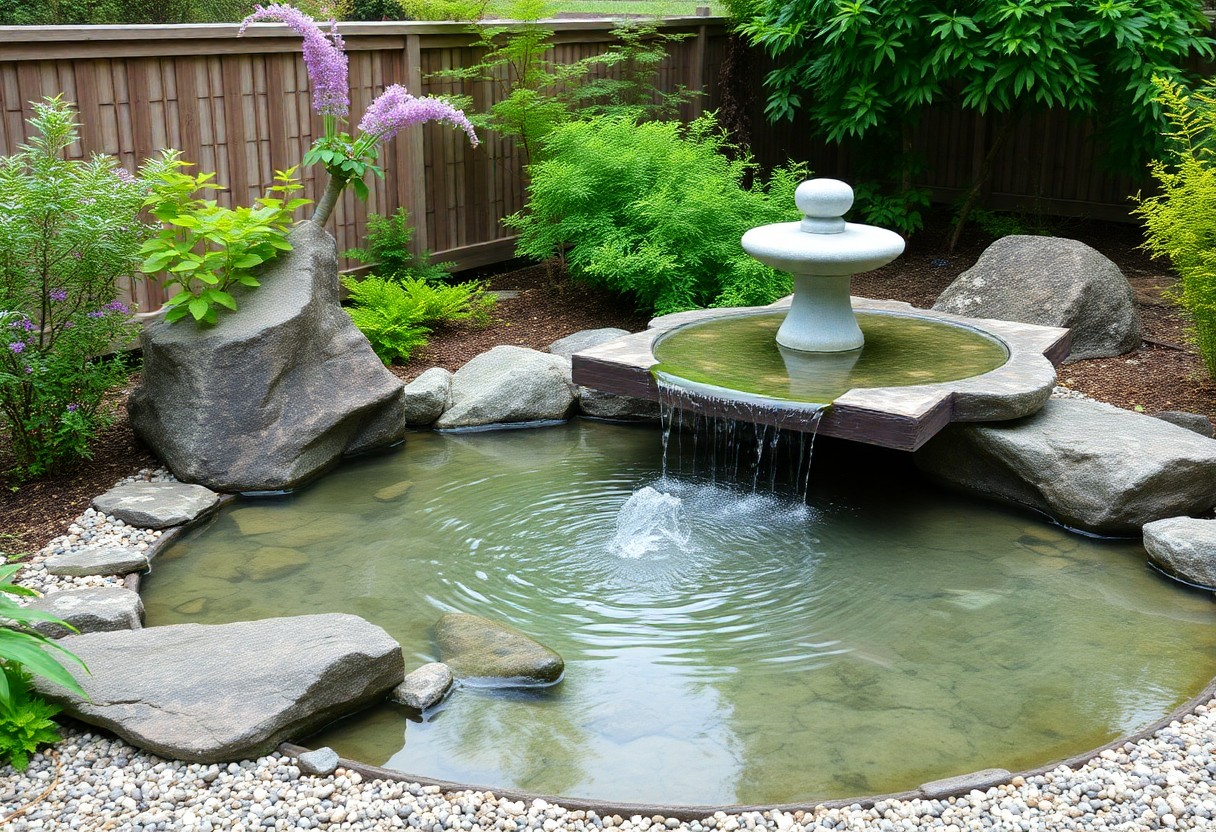
Please remember, that incorporating water will elevate the peacefulness of your garden. Make sure to scale your water feature to match the size of your space.
Layout Tips for a Serene Garden
A successful Zen garden relies on thoughtful design. Here’s how to arrange your elements for the best effect:
1. Paths and Walkways
Paths guide visitors through the garden, creating a journey for the mind as well as the body. A winding path made from stone or gravel can encourage slow, mindful walking. The key is to keep the path organic and unforced—let it naturally lead the eye from one point to another.
2. Focal Points

A Zen garden benefits from a few well-chosen focal points. A beautifully placed rock, a single plant, or a small statue can draw attention and invite contemplation. These focal points should enhance, rather than dominate, the overall feel of the garden. Keep it simple: one or two focal points are often enough.
3. Balance and Flow
When placing elements in your Zen garden, consider both symmetry and asymmetry to create visual interest. A balance between natural shapes and human-made forms (like paths or water features) adds depth and harmony.
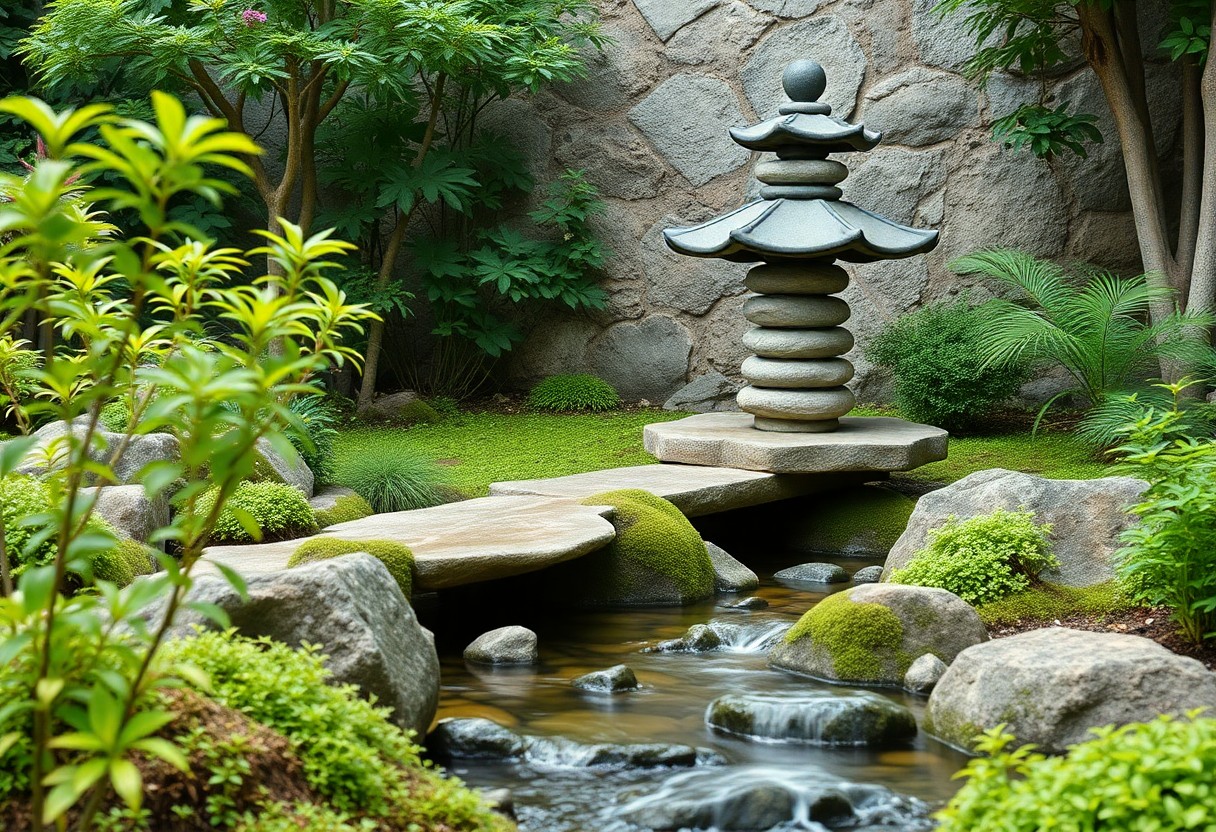
The arrangement should feel effortless and natural, not forced or overly designed.
Adding Personal Touches
In general, traditional Zen gardens follow certain design principles. However, there’s always room for personal flair. Perhaps you want to include a favorite piece of art, a plant with sentimental value, or a particular color that brings you peace.
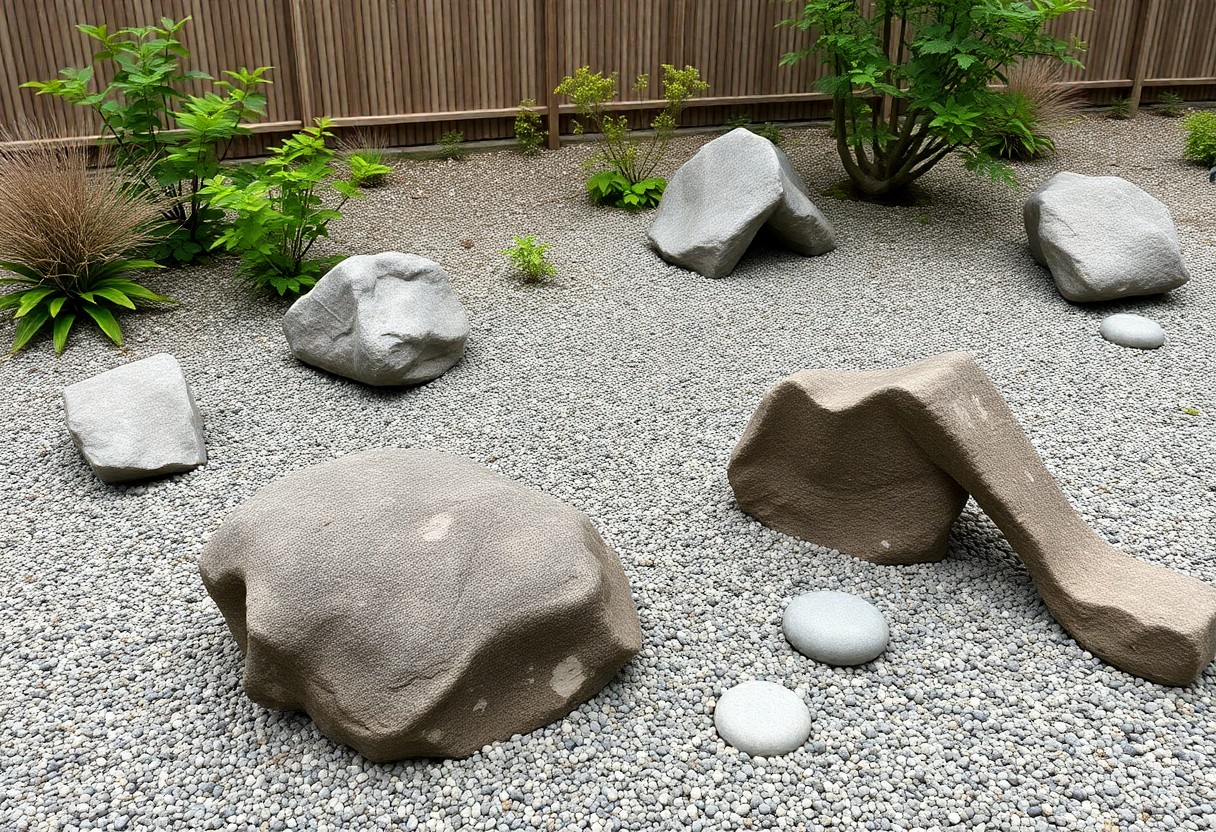
Adding these elements will make your Zen garden feel more meaningful and unique to you. Just remember, less is more—stay true to the minimalist nature of Zen design.
Keeping Your Zen Garden Beautiful
A Zen garden is meant to be a low-maintenance space, but it still requires regular care. Simple tasks like raking the gravel, pruning plants, and keeping the water feature clean will help preserve the garden’s tranquility.
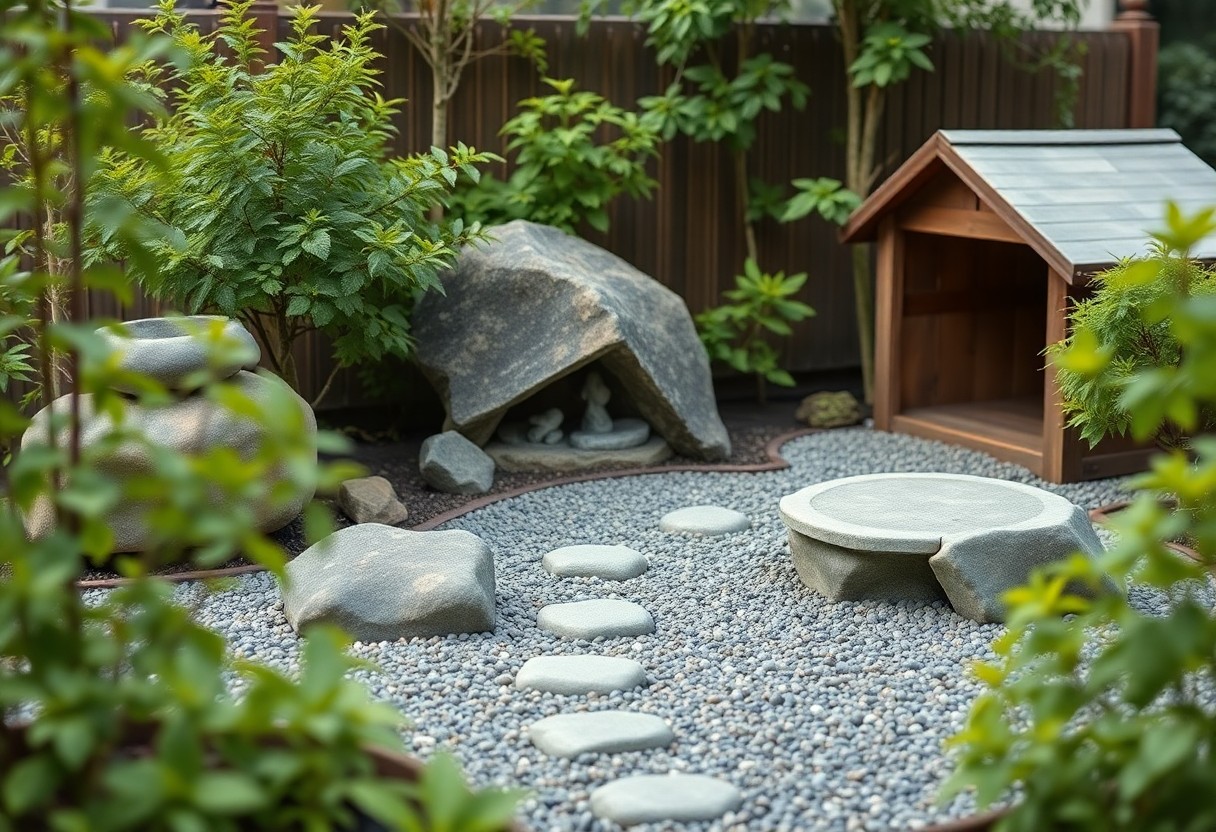
Set aside a few minutes each week for upkeep, so your Zen garden stays a peaceful retreat for years to come.
Related Articles:
Final Thoughts
Creating a Zen garden at home is a project that offers a peaceful retreat from daily life. You’re looking to meditate, reflect, or simply enjoy a calm environment? A Zen garden can help you reconnect with nature and find balance in your busy world.
With the right planning and design, even the smallest space can become a sanctuary of serenity. So, why not start today and bring the calming power of a Zen garden to your home?
Let the simplicity of a Zen garden help you clear your mind, one stone at a time.






